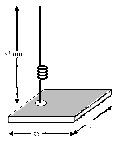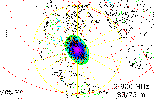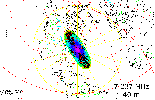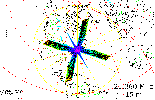|
Radio Propagational Analysis by Jared
When setting up radio equipment, I wanted to know more about what was actually happening when that PTT transmit button was pressed. So I did an analysis of several antenna arrangements, looking for radiated gain's, expected coverage, ect. I now have a much more detailed idea of where my RF will go, and what RF I can expect to hear. Seeing these emissions, it leads me to want a phased 4square antenna. I also did a SPLAT analysis for the NewEngland Forest Rally. This helps us ensure a safe rally event. |
|
Here's a quick model of the Ultra-Cobra multiband antenna that's attached to my wife's Kenwood TS2000. This antenna is about 160ft long and about 32ft in the air. I know that is far too low for this antenna to work correctly, however the terrain isn't going to change for my hobby needs. It does load up nicely and SWR is OK. I wondered how it was radiating. This is why I did the 4NEC2 on the current setup. The results show how this setup is not optimal, but functioning on all bands. What this shows me is that I'm not radiating very well, the quality of the signal I'm sending isn't ideal, so I'd like to find a better antenna system in the future. The Ultra Cobra is great because it's low cost, robust, and got on the air very quickly. However, other antenna designs will work much better. Click on the images to the left to see large views of each. |
|
A friend, AI2Q has made many contacts on his system, and it's worked flawlessly for several years. He's known for having a great signal, almost no distortion, and comes in with a strong signal. His setup is a good quality system. To the left are the results from the directional system similar to the 2 vertical antennas that AI2Q uses. It's a great and robust system. As you can see that RF it generates is much more uniform, than the splatter I'm putting out with my Ultra Cobra. The lobe is also much larger indicating it has much better gain in that direction. This system can be switched to send a signal either left or right, so that lobe can be easily flipped to the other direction. Click on the images to the left to see large views of each. |
|
To the left is the results from the system I eventually want to have. This one is called a 4square, and is very similarly to the 2 verts noted above. This allows directional steering by changing the phase on all 4 poles, where the 2 verts only allows left or right direction controls. This allows for higher gain, and more directivity, such that I can put most of my power in the direction of where I'm trying to send it, allowing me to either reach farther, or use less power, and I can also hear better, which will allow me to make better contacts. Even better, this model indicates it will fit on my property, and good bonus for any antenna system. Click on the images to the left to see large views of each. |
|
I also participate in the NewEngland Forest Rally (NEFR) I do what's known as radio rally. The terrain is rugged and cell phone coverage does not exist. Even if it did exist, the point to point nature of cell technologies is not well suited for event coordination, you need to say your message once and have it heard by a large audience. This is an ideal place for HAM radio. We setup radio check points that allow us to pass messages for both normal event traffic, but more importantly for emergency traffic. The vehicles travel on closed stages typically about 15 miles long at an average speed of about 70 MPG and up to 130 MPG. These stages are typically logging trails. On occasion, the trail needs to be created by the first car as the cars travel through a miscellaneous section of the woods. In that kind of environment quick communications can be a life saving feature. To the left are some SPLAT pictures I made to help plan for the optimal locations to place these check points such that we can pass messages with a minimal number of check points. I also show an optimal location for a potential temporary repeater. Click on the images to the left to see large views of each. |
|
Last update Jan 26, 2010 E-mail web@jaredharvey.com

 [+]
[+] [+]
[+] [+]
[+]